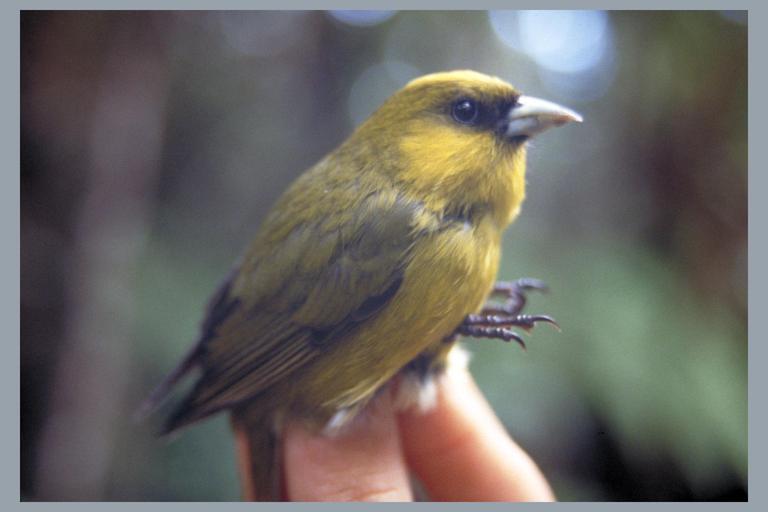MAKE A MEME
View Large Image

| View Original: | An_Endangered_Creeper.jpg (3072x2048) | |||
| Download: | Original | Medium | Small | Thumb |
| Courtesy of: | www.flickr.com | More Like This | ||
| Keywords: usgs biology honeycreeper bird avian wildlife disease wildlifedisease wildlife health wildlifehealth endangered hawaii malaria science animal songbird outdoor photo border Nope, it's not a Minecraft Creeper — there's plenty of those. We're talking about the Hawaiian Honeycreeper. Many species of Hawaiian honeycreepers have persisted into the 20th century because high elevation rain forests on the islands of Kaua’i, Maui, and Hawai’i are cool enough to limit transmission of introduced avian malaria. Malaria transmission is tied closely to the effects of temperature on development of malarial parasites within their mosquito vectors and the effects of temperature and rainfall on seasonal and altitudinal changes in mosquito populations. As a result, this system may be very sensitive to recently documented increases in mean temperature in the Hawaiian Islands. USGS scientists have documented recent dramatic increases in avian malaria on the Alaka'i plateau on Kaua`i that could affect recovery of two endangered honeycreepers, the `Akikiki and `Akeke`e, and one endangered thrush, the Puaiohi. Credit: Carter Atkinson , USGS Nope, it's not a Minecraft Creeper — there's plenty of those. We're talking about the Hawaiian Honeycreeper. Many species of Hawaiian honeycreepers have persisted into the 20th century because high elevation rain forests on the islands of Kaua’i, Maui, and Hawai’i are cool enough to limit transmission of introduced avian malaria. Malaria transmission is tied closely to the effects of temperature on development of malarial parasites within their mosquito vectors and the effects of temperature and rainfall on seasonal and altitudinal changes in mosquito populations. As a result, this system may be very sensitive to recently documented increases in mean temperature in the Hawaiian Islands. USGS scientists have documented recent dramatic increases in avian malaria on the Alaka'i plateau on Kaua`i that could affect recovery of two endangered honeycreepers, the `Akikiki and `Akeke`e, and one endangered thrush, the Puaiohi. Credit: Carter Atkinson , USGS | ||||